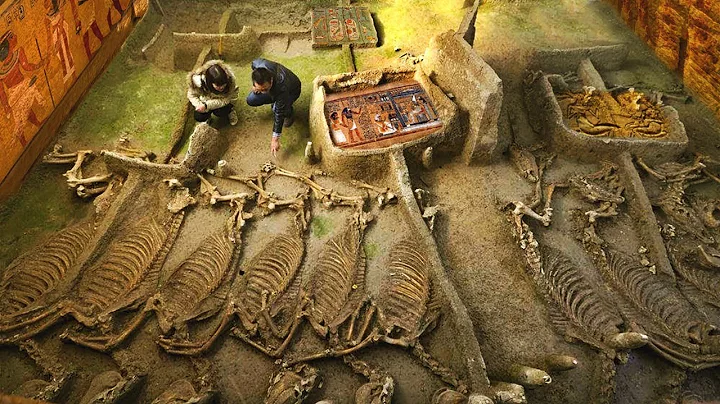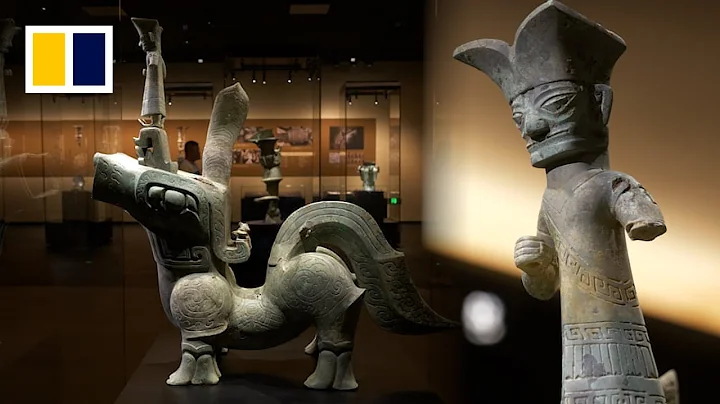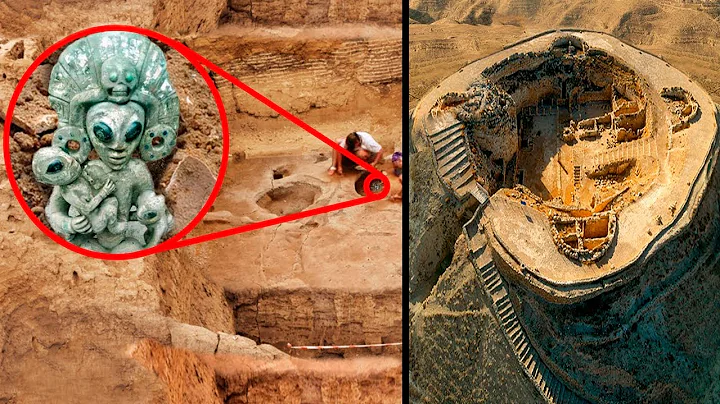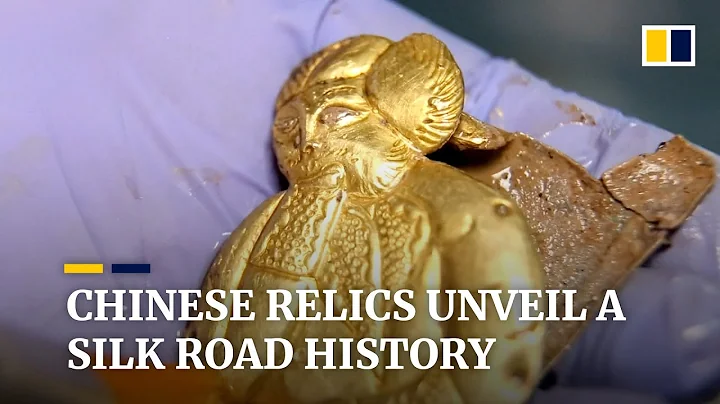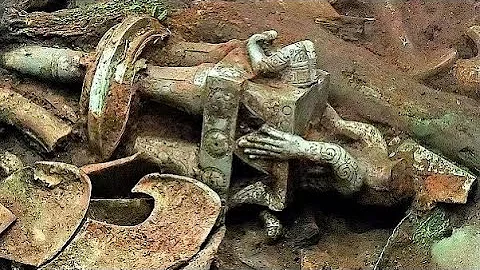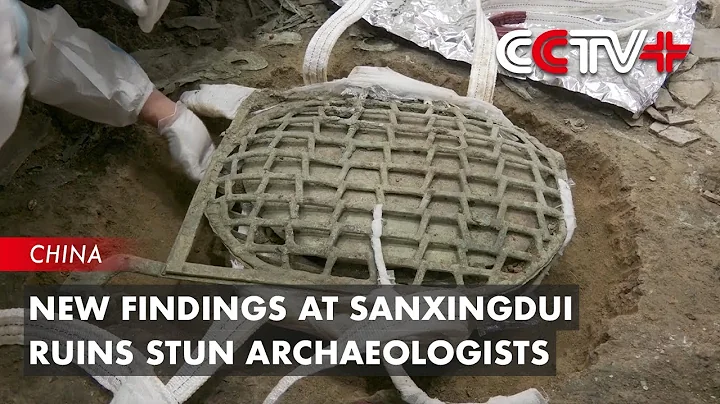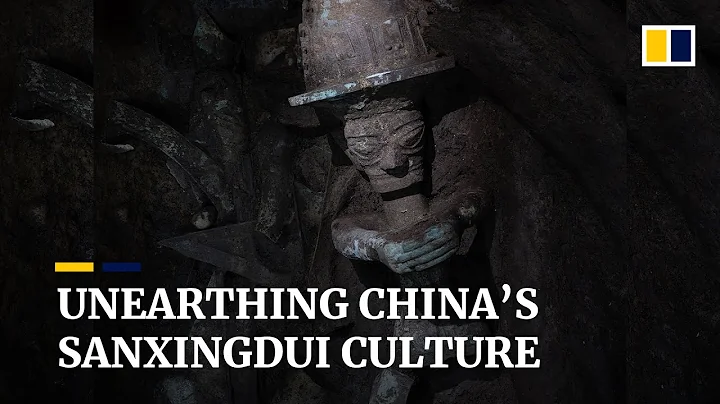What archaeologists are most afraid of is digging up cultural relics that look and do not belong to of that era. For example, the cultural relics in Sanxingdui look like those from time-to-time.
Paleontologists said that they have long been used to it. As long as they have seen prehistoric marine life fossils , nothing will be new when they see it again.
What have paleontologists not experienced? I have even seen the "screws" that were 4.3 billion years ago. They are still the "screws" of embedded in the meteorite .

The magical cultural relics of Sanxingdui
This piece seems to be the "screw" of an alien civilization, revealing the history of life evolution and the lively ocean world.
At that time, it was an era full of creativity. Creatures showed their unlimited evolutionary potential, telling future generations of mankind what biological diversity is all about.
Let us follow this "screw" and return to the earth's ocean hundreds of millions of years ago.

The lively ancient ocean
Mysterious "screw"
A screw from .3 billion years ago, what does it mean? You should know that the first person to propose the concept of screws was Archimedes of ancient Greece more than 2,000 years ago. The actual production of screws was already in the 118th century.
3 billion years ago, the earth was still in the Carboniferous Period. At this time, vertebrates had just landed and were in amphibious form.
Plants are growing wantonly on land, and the oxygen content of the entire earth has reached a record high.
Arthropods dominate the land and are truly " giant insects ".

The land of the Carboniferous period was full of vitality, but without any civilization.
Dare I ask how screws were born in such an era?
What is even more puzzling is that this screw is embedded in a meteorite, as if to say that it is a visitor from outer space.
So is this screw really the work of aliens?
Paleontologists conducted a composition analysis on the screw. The analysis results showed that it was an organic creature during its lifetime. Could it be that the animal became a "screw spirit" before the founding of the People's Republic of China?

Prehistoric "screws"
I'm afraid not, because paleontologists quickly found the true identity of the screw, a prehistoric creature - crinoid .
A lily is a plant. Is a crinoid a lily that blooms in the sea?
No, crinoid is an animal that appeared during the Cambrian species explosion and is considered a veteran creature . What's even more amazing about
is that to this day, crinoids still exist as , and there are more than 4600 kinds of existing in the world.

Existing crinoids
Sea lilies
The Carboniferous was the most prosperous era of crinoids, and they were found in every corner of the ocean at that time.
Although crinoids belong to echinoderms, they look very much like plants , as if they are lilies blooming in the water.
The "roots" of crinoids anchor them to the seabed, reefs, and even the remains of living things.
The tentacles of the crinoid form "petals" , swaying in the water. This is not that it is dancing, but that it is using these tentacles to search for nutrients in the ocean, such as plankton, seaweed, etc.

Fossils of sea lilies
The natural connection between the "roots" and "petals" of a sea lily is its "stem", which is the body of the sea lily through which the nutrients obtained by the "petals" are transported to each cell.
In order to strengthen their bodies, crinoids have evolved their "stems" into link-shaped , which is like the drain pipe of a washing machine and can be stretched, which helps them expand their hunting range .
Crinoids are not like plants that do not move around. Some species are that swim freely in the sea, heading to sea areas where food is more abundant.
As invertebrates, crinoids are like a swimming delicious .

Swimming crinoids
The Carboniferous ocean was filled with various fish. Their mandibles had long been fully evolved and could eat delicate crinoids in one bite.
Therefore, some crinoids learned from cnidarians and evolved stingers .
As an invertebrate, if a crinoid dies, the first thing to rot is its tentacles, and the easiest thing to preserve is its "stem".
It's just that many crinoid fossils are flat and the "stem" cannot be seen to be screw-shaped. The crinoid of this meteorite is a rare "3D three-dimensional ".

Fossils of crinoids
Scientists speculate that this piece of crinoid embedded in a meteorite is likely to be an extraterrestrial visitor that hit the earth. It just so happened that this piece of meteorite hit the shallow sea.
Due to friction and heat in the atmosphere, the meteorite was in a blazing state. When it hit it, wrapped the crinoid in it. , the crinoid naturally died on the spot.
After the meteorite cooled, the remains of this crinoid were sealed inside until they were discovered by humans 300 million years later.
Any meteorite can hit a crinoid. You can imagine how prosperous crinoids were in the Carboniferous ocean.

Meteorites hit the earth
Fossils alone show that there are more than  ,000 types of ancient crinoids, and their tentacles have a variety of shapes.
,000 types of ancient crinoids, and their tentacles have a variety of shapes.
The "petals" of sea lilies don't just look like lilies, but also look like fern leaves, chrysanthemum, and even cilantro.
Since these plants appeared later than crinoids, we have reason to believe that they are "pirated" and crinoids are "genuine".
Crinoids are just the tip of the iceberg at the peak of the Carboniferous period. In this era, many biological history were created.

Crinoids on the seabed
The peak of the Carboniferous period
The Carboniferous period is the penultimate period of the Paleozoic Era, and it is also a critical era of biological evolution. During this period, the ancestor of mammalsthe ancestor Monarchus really set foot on land. .
On the other hand, the common ancestor of dinosaurs, crocodiles, pterosaurs , marine reptiles also landed at the same time.
Their descendants will start to love and kill each other for more than 200 million years.
The Carboniferous era is a veritable era of arthropods, also known as the " giant insect era".

Giant insects of the Carboniferous period
Flying in the sky are giant dragonflies with a wingspan of nearly one meter, giant cicadas with a wingspan of half a meter, and giant spiders of the Carboniferous period . If it is still alive, it will Will feed on cats.
In addition, there are giant millipede and giant centipede , with a body length of about 13 meters , which was the snake of that era.
Since most of the vertebrates at that time were still in amphibious mode , they were destined to be unable to leave the water too far.
So the insects took the lead in entering , taking the lead in entering the inland areas and enjoying more resources.
Why do these arthropods grow so huge?

Giant vein dragonfly
The reason lies in oxygen content . The oxygen content in the Carboniferous was  5% to 40%, far exceeding our atmosphere today.
5% to 40%, far exceeding our atmosphere today.
The size of animals such as insects and spiders is very dependent on the concentration of oxygen . The greater the oxygen concentration, the larger their size, and on the contrary, the smaller they are.
The Carboniferous Period was not only the peak of animal evolution , but also the plant evolution . During this period, gymnosperms began to replace various ferns and became the leaders among plants, forming a real wooden tissue .
This allows gymnosperms to grow taller and not decay quickly after being buried in the ground, thus generating an energy source - coal.
Half of the coal resources we mine now come from trees in the Carboniferous period.
However, must decline when it reaches its peak, and everything must reverse when it reaches its peak. Such a high oxygen concentration is definitely not all a good thing.

Carboniferous Era
The End of the Carboniferous Period
At the end of the Carboniferous Period, fires occurred frequently on the earth .
Dense forests absorb carbon dioxide from the atmosphere and convert it into organic matter such as cellulose through photosynthesis and fix it in the tree trunks .
These carbons cannot return to the atmosphere for a while, and slowly the oxygen in the atmosphere gradually takes over.
Oxygen is an excellent combustion accelerant. Under such circumstances, the air of the Carboniferous Period was very "flammable and explosive".
Sometimes all it takes is a flash of lightning and a little bit of heat to set the forest on land on fire. Not only were the trees ignited, but those coal seams exposed to the air were also ignited.

Forest fires in the Carboniferous period
At the end of the Carboniferous period, the earth was like a sea of fire. To a certain extent, this was increasing carbon dioxide and restoring the carbon balance.
Soon, creatures were swept away by a global cooling . Rainforests collapsed and sea levels dropped . Crinoids were severely affected by this catastrophe.
Since then, the species of crinoids have begun to decline, gradually losing their territory in the ocean.
But as the original version of of earth creatures, crinoids retain the advantages of the original model of life , which is to firmly occupy the bottom ecological niche , so that they can keep their basic base and not be afraid of being exterminated in one pot.
There are more than 600 species of crinoids surviving today, divided into sessile crinoids and sessile crinoids . They continue the life pattern of their ancestors, either fixed on the seabed or drifting with the tide.

They once existed.
Some types of crinoids can still see screw-like links on their bodies. This is their best way of sticking to their original intentions.
